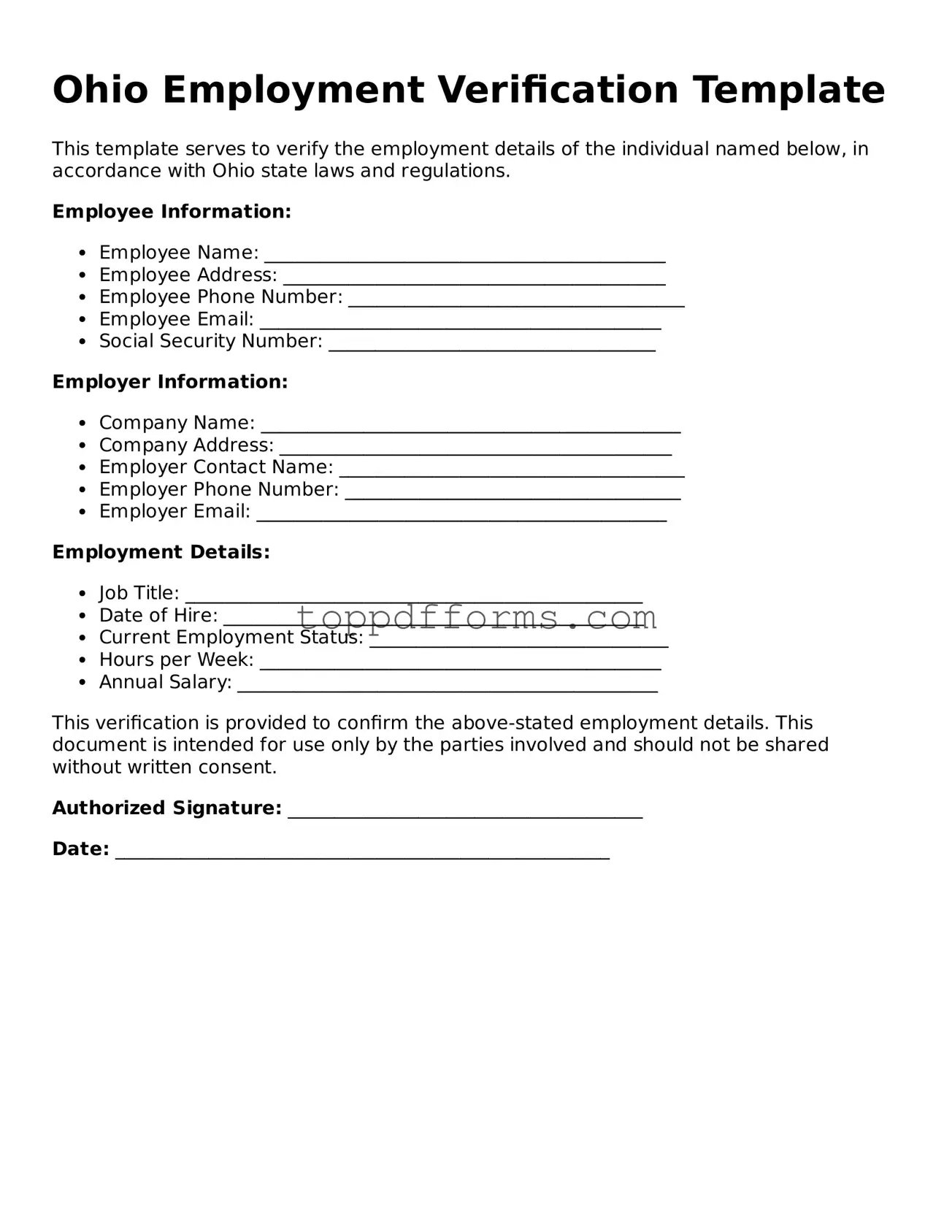What is the Ohio Employment Verification form?
The Ohio Employment Verification form is a document used by employers in Ohio to confirm an employee's employment status, job title, and dates of employment. This form is often required for various purposes, such as applying for loans, housing, or government assistance programs. It serves as an official record that verifies an individual’s employment history.
Who needs to fill out the Ohio Employment Verification form?
Typically, employers are responsible for completing the Ohio Employment Verification form. However, employees may request this verification for personal reasons. If you need proof of employment for a loan application or rental agreement, you can ask your employer to fill out the form on your behalf.
What information is included in the Ohio Employment Verification form?
The form generally includes key details such as the employee's name, job title, employment dates, and sometimes salary information. Employers may also provide additional comments regarding the employee's performance or work ethic, although this is not always required. Each employer may have a slightly different format, but the essential information remains consistent.
How do I request an Employment Verification from my employer?
To request an Employment Verification, it’s best to approach your supervisor or the HR department directly. You can do this in person, via email, or through a formal request letter. Be clear about why you need the verification and provide any necessary details, such as the deadline for submission. A polite and professional request can go a long way in ensuring a swift response.
Is there a fee for obtaining the Ohio Employment Verification form?
In most cases, employers do not charge employees for completing an Employment Verification form. However, some companies may have policies in place regarding fees for processing requests, especially if they involve extensive research or documentation. It's a good idea to check with your HR department to understand any potential costs involved.
What should I do if my employer refuses to provide an Employment Verification?
If your employer refuses to provide an Employment Verification, first try to understand their reasons. Sometimes, there may be company policies or concerns about privacy. If necessary, you can remind them of your rights and the importance of the verification for your personal needs. If the issue persists, consider seeking advice from a legal professional or your local labor board to explore your options.
